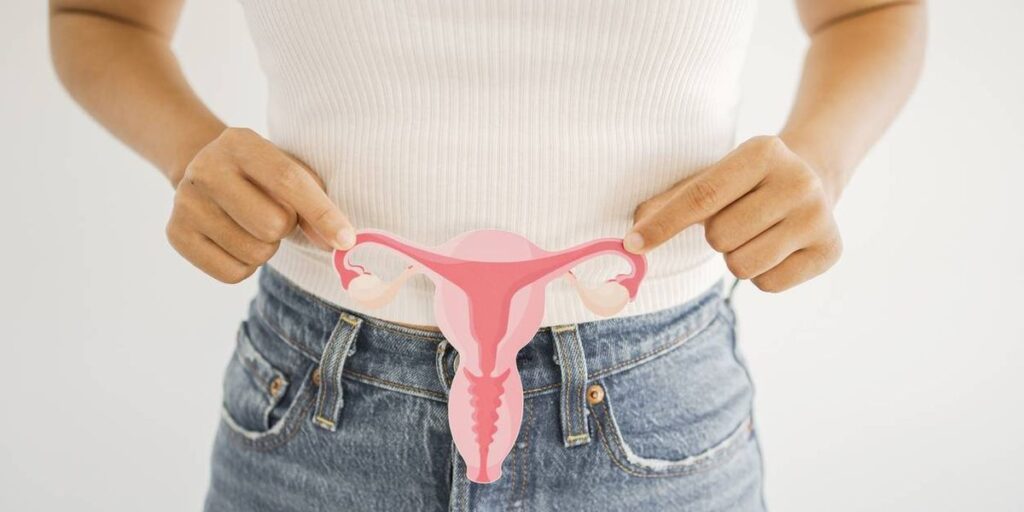Menstrual cramps and heavy bleeding are sometimes seen as “simply a part of having a interval,” however they will also be indicators that one thing’s not fairly proper together with your uterine well being.
In case you’re having lots of ache or heavy bleeding, it may level to a well being drawback that wants care — not one thing to endure with in silence.
Realizing what’s regular and what’s not can assist you’re taking higher care of your uterus and general reproductive well being.
Listed below are 10 indicators that time to good uterine well being, and what it may imply should you expertise one thing out of the strange.
2. Your interval lasts between two and 7 days
iStock.com/stefanamer
A interval often lasts between two and 7 days. In case you bleed longer than seven days, you may need menorrhagia, or heavy menstrual bleeding. Whereas menorrhagia is frequent, it may be linked to PCOS, fibroids, sexually transmitted infections (STIs) and even sure drugs. Bleeding for lower than two days may very well be a results of being pregnant, perimenopause, contraception or sure life-style components. It will also be linked to medical circumstances reminiscent of PCOS or thyroid illness. In case you discover bleeding that’s shorter or longer than regular, go to your healthcare supplier (HCP).
3. Your move is regular
A wholesome menstrual move signifies that your interval follows a predictable sample with out main adjustments in quantity or period. It might be heavier through the first day or two, however it slowly tapers off. You shouldn’t be soaking by means of a tampon or pad each hour or needing to double up on safety.
4. You don’t cross lots of massive clots
It’s regular to pass small blood clots throughout your heaviest days — often across the dimension of a dime or quarter. Nonetheless, should you’re usually passing clots bigger than 1 / 4, and if they’re alongside heavy bleeding, it may point out a well being challenge.
Giant blood clots is usually a signal of thyroid disorders, uterine polyps, fibroids, bleeding issues or, in uncommon circumstances, uterine or cervical cancer. If this sounds acquainted, it’s value sharing together with your HCP.
5. Your menstrual cramps are manageable and short-lived
Cramps are to be anticipated throughout your interval, particularly on the primary couple of days. These gentle to average aches within the decrease stomach or again are often manageable with heating pads or over-the-counter ache relievers, reminiscent of ibuprofen (Advil) or acetaminophen (Tylenol).
What’s not regular is cramping so extreme it will get in the best way of your day. This stage of ache — often known as dysmenorrhea (painful cramps) — can final a number of days and trigger sharp and throbbing ache. It might additionally include nausea, dizziness or complications. Dysmenorrhea can usually be handled, so be sure you let your HCP know should you assume your cramps are extra painful than they need to be.
6. You don’t expertise ache exterior your interval

iStock.com/PeopleImages
It’s regular to have cramps through the first day or two of your interval, however ache that sticks round after your interval ends may very well be a crimson flag. Persistent or off-cycle pelvic pain could also be secondary dysmenorrhea, which means that it’s brought on by an underlying well being situation, reminiscent of endometriosis, adenomyosis or uterine fibroids, amongst different issues.
7. You don’t bleed between intervals
Gentle recognizing proper earlier than your interval begins is totally regular. However bleeding that happens between cycles isn’t typical and may very well be an indication of irregular uterine bleeding (or menometorrhagia). This type of bleeding could also be brought on by hormonal imbalances, fibroids, drugs or, hardly ever, most cancers.
8. You don’t really feel dizzy, faint or out of breath throughout your interval

iStock.com/Igor Suka
It’s okay to be a bit drained or extra sluggish throughout your interval, however it shouldn’t depart you dizzy, faint or gasping for air. These signs may point out anemia — usually associated to heavy bleeding — or different circumstances like dysmenorrhea, premenstrual dysphoric disorder (PMDD) or low blood strain.
Some individuals may additionally expertise shortness of breath on account of a uncommon situation referred to as catamenial pneumothorax. It happens when air will get into the area between your lungs and the within of your chest earlier than or after the beginning of your interval.
In case you expertise lightheadedness or shortness of breath throughout your cycle, contact your HCP or search rapid care.
9. You don’t run a fever throughout your interval
Your physique temperature naturally fluctuates throughout your cycle on account of hormonal adjustments — particularly round ovulation. Some individuals expertise what’s often known as “period flu,” a sort of premenstrual syndrome (PMS) that may trigger flu-like signs, together with physique aches, diarrhea, complications, fatigue and even a low-grade fever. These signs are usually manageable with relaxation and over-the-counter drugs.
However a real fever — 100.4 degrees Fahrenheit or higher — is a serious crimson flag. It may very well be an indication of poisonous shock syndrome (TSS), pelvic inflammatory illness (PID) or urinary tract an infection (UTI).
In case you develop a fever alongside pelvic ache or simply really feel typically unwell, attain out to your HCP.
10. Your interval doesn’t intrude with day by day life
Gentle to average cramping and bleeding could also be uncomfortable, however they usually gained’t have an effect on your day by day life. But when your interval usually retains you away from faculty, work or different duties on account of intense ache, heavy bleeding or exhaustion, that is not one thing to dismiss.
Disruptive intervals may very well be an indication of PMDD or uterine circumstances like endometriosis or fibroids.
Durations shouldn’t cramp your model
Durations shouldn’t must be one thing you are feeling the necessity to push by means of. Being attentive to the indicators your physique offers is an effective way to guard your uterine well being — and general well-being.
If any of those indicators of regular uterine well being don’t look like your norm, be sure you speak to your HCP.
This academic useful resource was created with help from Sumitomo Pharma America, Inc., a HealthyWomen Company Advisory Council member.
From Your Website Articles
Associated Articles Across the Internet
